HP3478A multimeter
The 3478A is a 5 1/2 digit multimeter introduced by HP in 1983, was sold for a long time, and could be considered vintage by now. Despite its age it is still a very useful and nice benchmeter. It comes with the following functions: DC/AC voltage measurement, AC/DC current measurement and 4- or 2- wire resistor measurement. Additional functions as diode-check, continuity and so on are not included. The connections to this meter can also be made at the backside of the unit (switchable with mechanical switch), and an early and basic version of GPIB interface (called HP-IB) can be used to communicate with the unit. The LCD display lacks a backlight which some people consider as a drawback.
Under the following links I have also additional information about the 3478A:
3478A modification to use FRAM instead of original battery backed SRAM
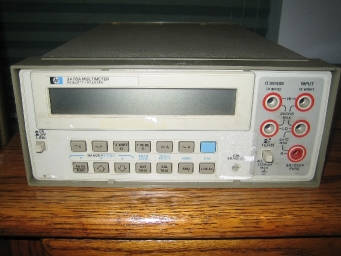

Calibration
HP also used a newer concept in the 3478A: calibration was not done with potentiometers inside the unit, but instead calibration is fully done in software. To calibrate the unit different stable and correct reference voltages/currents and resistance values have to be applied to the input, and then the unit itself calculates the necessary calibration coefficients. This values are then stored inside the unit, and used later during the measurements to correct for errors in the hardware. Only with the correct calibration values which are unique for each unit the measurement results are reliable.Unfortunately when this meter was designed it was state-of-the art (or the only possible way) to store this calibration values in battery-backed SRAM. What this means is that for whatever reason this SRAM looses supply power the calibration values of the unit are lost, and without a recalibration the unit can not properly used anymore. The factory installed Lithium-batteries will hold this calibration values for a long time, but owners still have to make sure that an almost empty battery is soon enough replaced with a new battery.
Replacing the battery in a 3478A with a new one is not as straight-forward as it may sound: if the power supply to the RAM is only lost for a split second the calibration values are lost! Therefore simply desolder the battery and installing a new one is not an option. There are a lot of explanations on the internet how to do this properly.
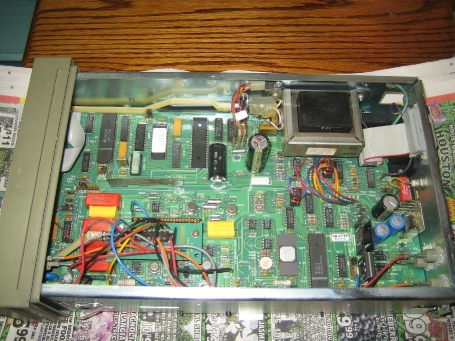
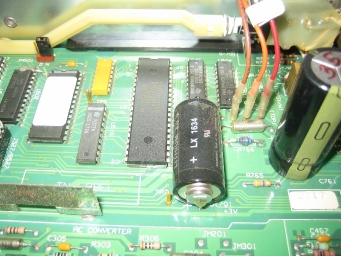
My first 3478A
I bought my first unit for 150 USD on Ebay while I was living in the US. Especially in the US the supply with older test equipment on ebay is quite good. Please keep in mind that the lithium battery which is contained in the unit makes shipping quite complicated: for example transport or shipping on a passenger aircraft is not allowed, because the battery is considered a fire hazard. Make sure that you follow all regulations!Before buying an used 3478A on ebay make at least sure that you see a picture of the unit passing its selftest. Every time the unit is turned on the microprozessor reads the calibration RAM and calculates the checksum. If this checksum is not ok, therefore the unit does not have a valid calibration anymore, this selftest will fail. Paying 150 USD for a used 3478A was certainly not a bargain, but the good thing was that the calibration was still intact. Some first quick tests looked promising. It seems my first 3478A was also one of the earlier units produced by HP: in the earlier designs two transformers were used to galvanicly isolate the communication path between the two microprozessors from each other, in later designs this was done with optocouplers.
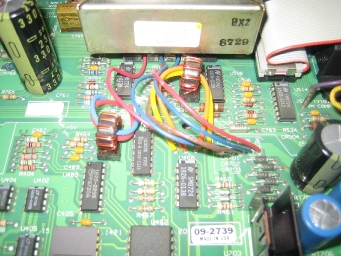
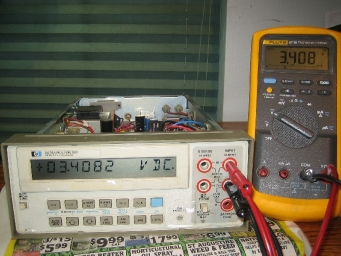
2nd 3478A
Some time later I bought another unit on Ebay for 70 USD. After turning the meter on then first time I was reliefed. The calibration was still intact. But after some time I found a firstproblem: suddently the meter turned itself off, or it restarted constantly itself. But beside this sporadic problems the meter was working. This unit was newer than my first 3478A because the
isolation transformers were already replaced by the optocouplers.
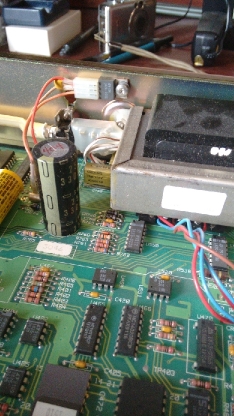
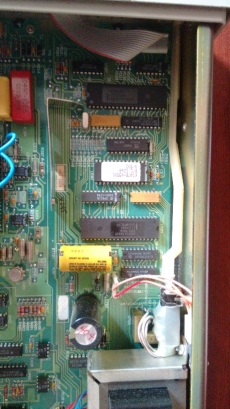
International move
Shortly before my move back to Europe I decided to replace the backup battery in my 2nd 3478A with a new one. I already did this succesfully for my first meter, and now I wanted to repeat thisprocedure exactly the same way as before. To make sure that I do not loose the calibration data while I swap the backup battery itself, I again decided to wired-OR an additional battery in parallel to the first one using another series-diode. This allows that the meter is unpowered and disconnected from the mains during soldering, and therefore it is ok to use a solder iron which is not isolated from the mains. Unfortunetly this times things did not go well for me: When I soldered the cables from the second battery to the decoupling capacitor of the SRAM suddently I saw that the voltage to the SRAM was lost. I had a short on the SRAM supply, and therefore my calibration values were already lost. Even worse the backup battery was shorted. To prevent that something bad happends to the shorted battery I quickly cut the lead of the battery to the PCB. As I should find out later in Europe the short was generated by the decoupling capacitor which failed during soldering. Most likely I overheated the part with my soldering iron.
Because the lithium batterys made shipping my private goods to Europe via container much more complicated (special rules apply for this kind of lithium batterys), and I lost already the calibration of one unit, I now decided to just go ahead and to remove all backup batteries from all of my test equipment. This meant I also had now an uncalibrated first unit, but at least shipping with the container was no problem anymore.
My plan was to recalibrate both units in Europe again. This made also sense from the following viewpoint: After switching the line frequency from 60 Hz to 50 Hz the ADC timing will be altered, and this of course could mean that the calibration from the US does not apply anymore anyway. Therefore it is safer to recalibrate the meters from scratch.
Modifications for Europe
Of course using my meter in Europe needed first some modifications: the line voltage setting has to be changed to 240V, the new line frequency is 50 Hz, and last the mains fuse has to be changed to the new rating. Fortunetly most test equipment is already prepared for easier modification. In the 3478A a line voltage change is simply done with setting a wire jumper to another pinheader on the PCB. This in fact changes the tap on the mains transformer. The line frequency is changed via a DIP switch on the backside of the unit. The new fuse with the correct rating for 240V operation is simply put into the mains fuse holder at the backside of the unit.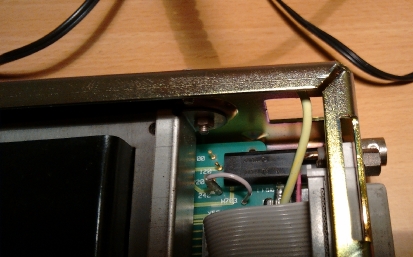
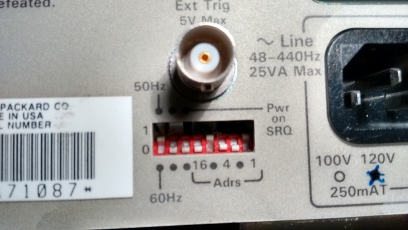
After this modifications the unit was ready to be used with 240V. But there was still something left I really wanted to do before I switch on the unit for the first time again. I was being told that the 3478A also uses the notorious RIFA capacitors on the mains input which can suddenly explode or start to burn/smoke. After looking up this topic in the internet I found a lot of information concering this topic, and that a lot of people swap this capacitors as a safety precaution as soon as the see them in older equipment to prevent any issues. When this capacitors age their housing often get small cracks. Through this cracks moisture enters the capacitor over time, and at some point the capacitor suddenly goes and makes a big mess or can even start a fire. After reading this I decided to swap all the RIFA caps in my meters before I even turn it on the first time again. I found 4 RIFA caps in the 3478A, and the old had already small cracks in their outer housing.
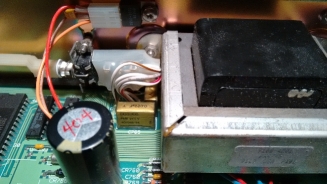
Two of the old RIFA caps and their replacement I have used, the picture on the right shows the desoldered and old capacitors.
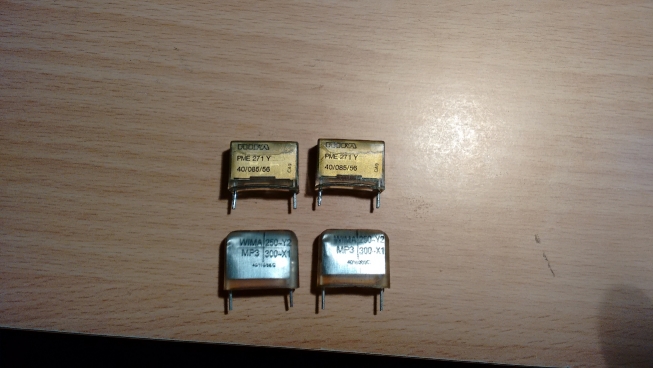
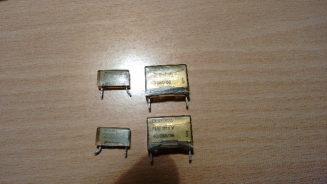
After all of this modifications I was able to turn the meter on again. Unfortunately I lost my calibration when I desoldered my battery, and now my 3478A needs a new calibration procedure. A missing calibration does not mean that the meter does not measure and show the results on the display, but the results which are shown are with a very high probability not accurate anymore.
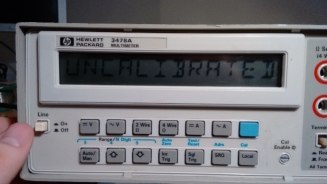
to be continued...
Under the following links I have also additional information about the 3478A:
3478A modification to use FRAM instead of original battery backed SRAM
